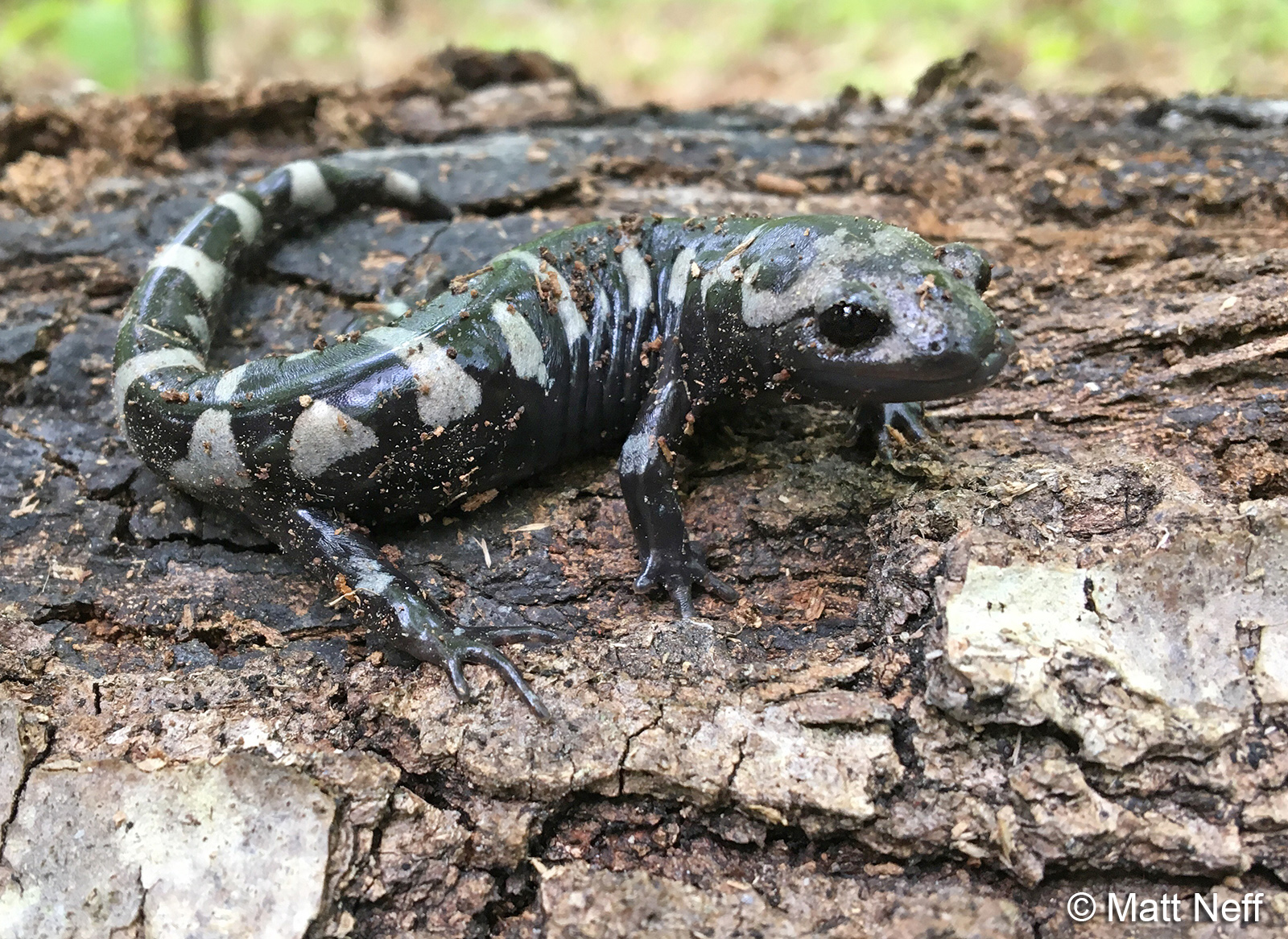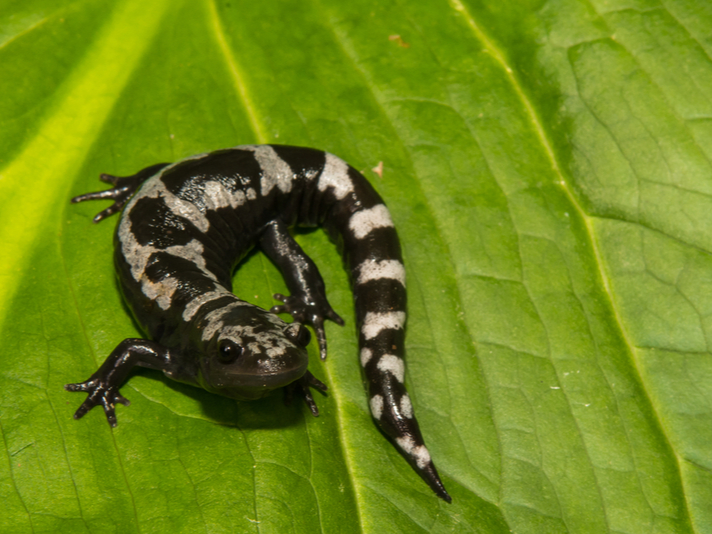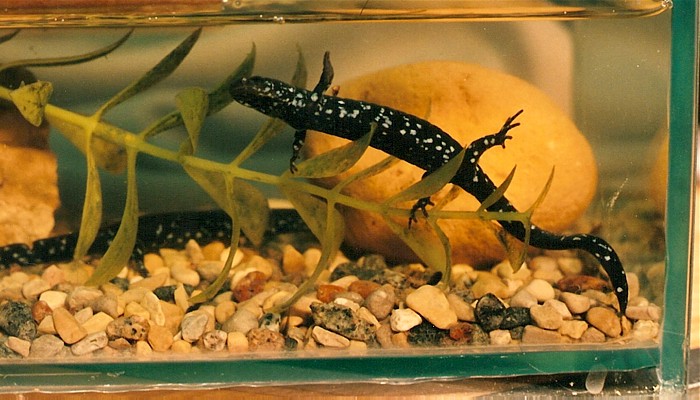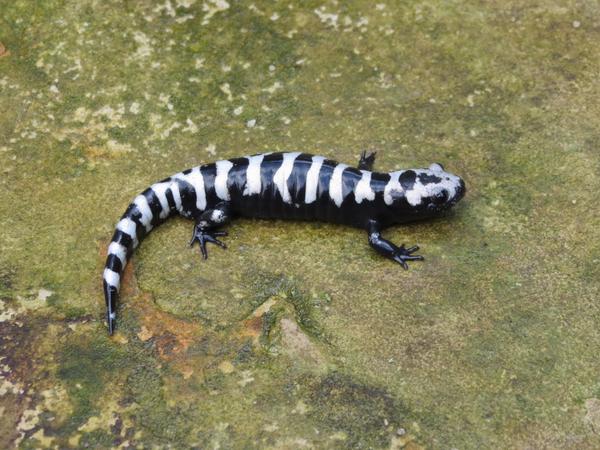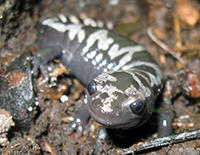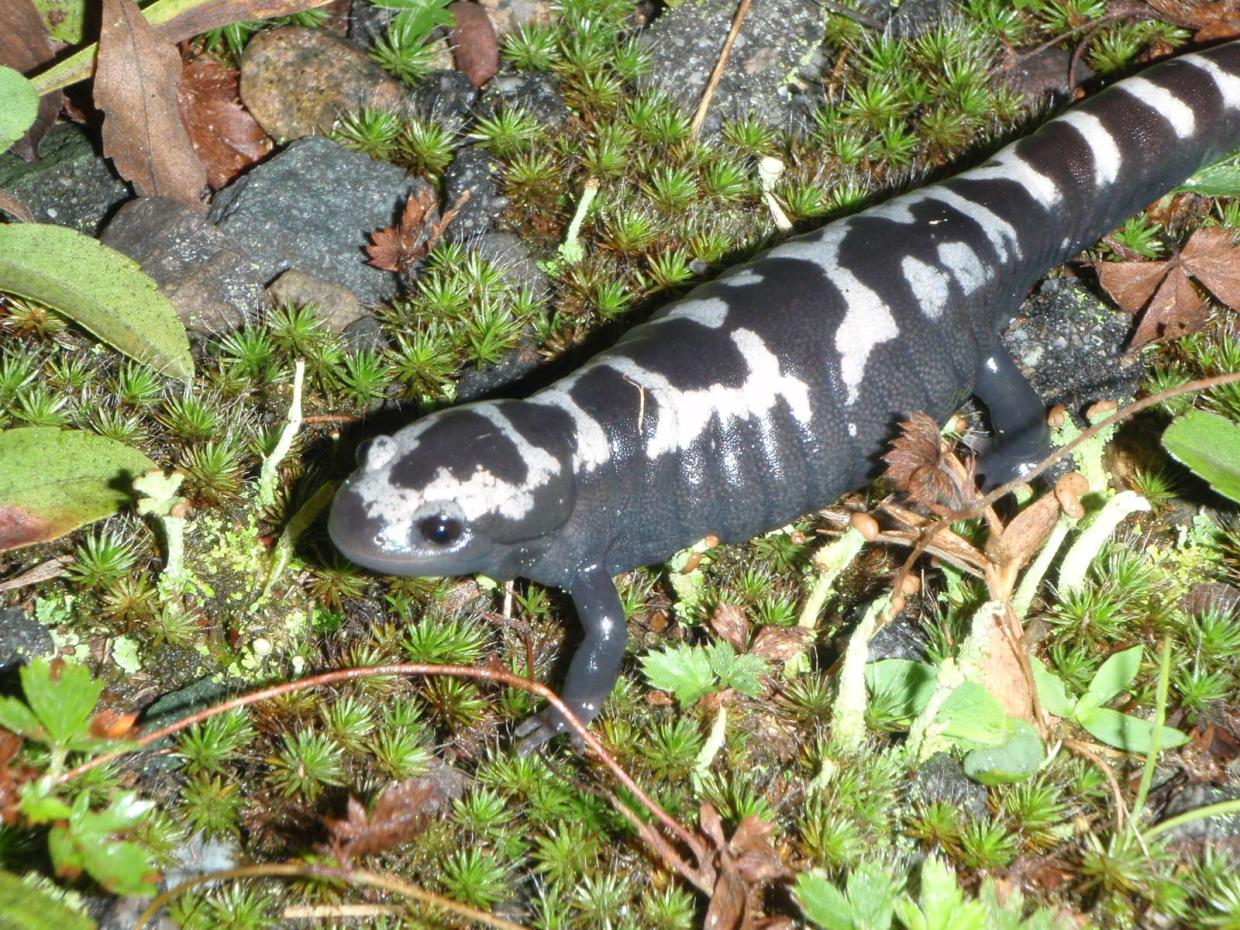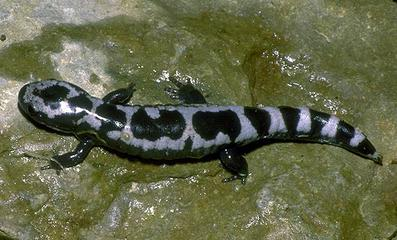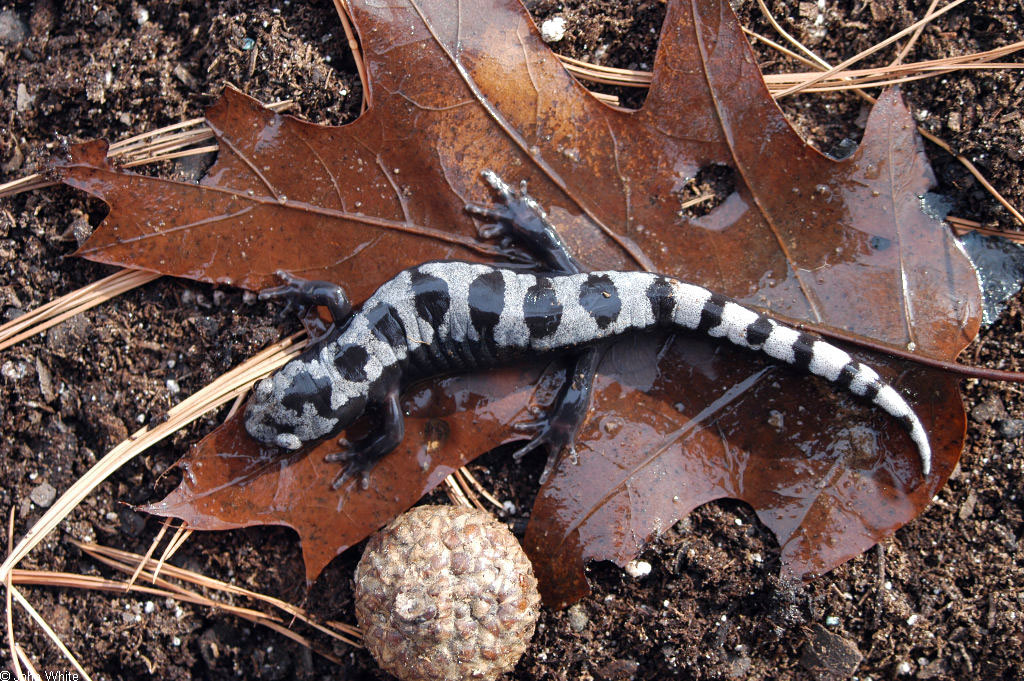Family ambystomatidae are a medium sized chunky salamander reaching up to 4 25 inches in length 10 8 cm as adults they have a variable number of white bars on the body.
Marbled salamander food source.
The marbled salamander ambystoma opacum also called the banded salamander is a member of the mole salamander family.
Adults can grow to about 11 cm 4 in small compared to other members of its genus.
Amphibians can be an important food source for other animals from ducks and wading birds.
Like other mole salamanders marbled salamanders are predators of smaller creatures but though they are voracious predators of insects worms and slugs they along with their eggs and juvenile forms provide food for many other hungry animals.
Marbled salamander fact sheet.
Ambystoma opacum the marbled salamander is found throughout most of the eastern united states from massachusetts west to central illinois southeastern missouri and oklahoma and eastern texas south to the gulf of mexico and the carolina coast it is absent from peninsular florida.
The marbled salamander is one of many amphibians found in the bottomland hardwood forests of mississippi.
This salamander food can be found at most pet stores.
Like most of the mole salamanders it is secretive spending most of its life under logs or in burrows.
The body is black with light bands of varying widths running across the back.
X research source for example though you might find it gross your salamander will enjoy eating crickets earthworms meal worms maggots buffalo worms and mosquito larvae.
Where is the marbled salamander found on the food chian.
They can be identified by their black dark brown body including its venter with light white silvery crossbands on the dorsum.
Asked by wiki user.
It gets its name from the white or silver bands that cover the black bodies of adult salamanders.
This species is sexually dimorphic males tend to have white crossbands and females tend to have gray silvery crossbands.
Disjunct populations are found in eastern missouri central illinois in northwest ohio.
A small stout bodied salamander this species is easily identified by its distinct black and white patterning across its entire body.
Like other ambystomatids these salamanders spend most of their time underground in burrows and are infrequently seen outside of the breeding season.
Just like any other type of sea food.
Adult marbled salamanders maintained on a low food diet were more prone to bite an intruding salamander than those on a high food diet ducey and heuer 1991 which may indicate that aggression functions to repel an intruder from an individual s feeding area burrow refuge.
The bands of females tend to be gray while those of males are more white.
Marbled salamanders ambystoma opacum urodela.




